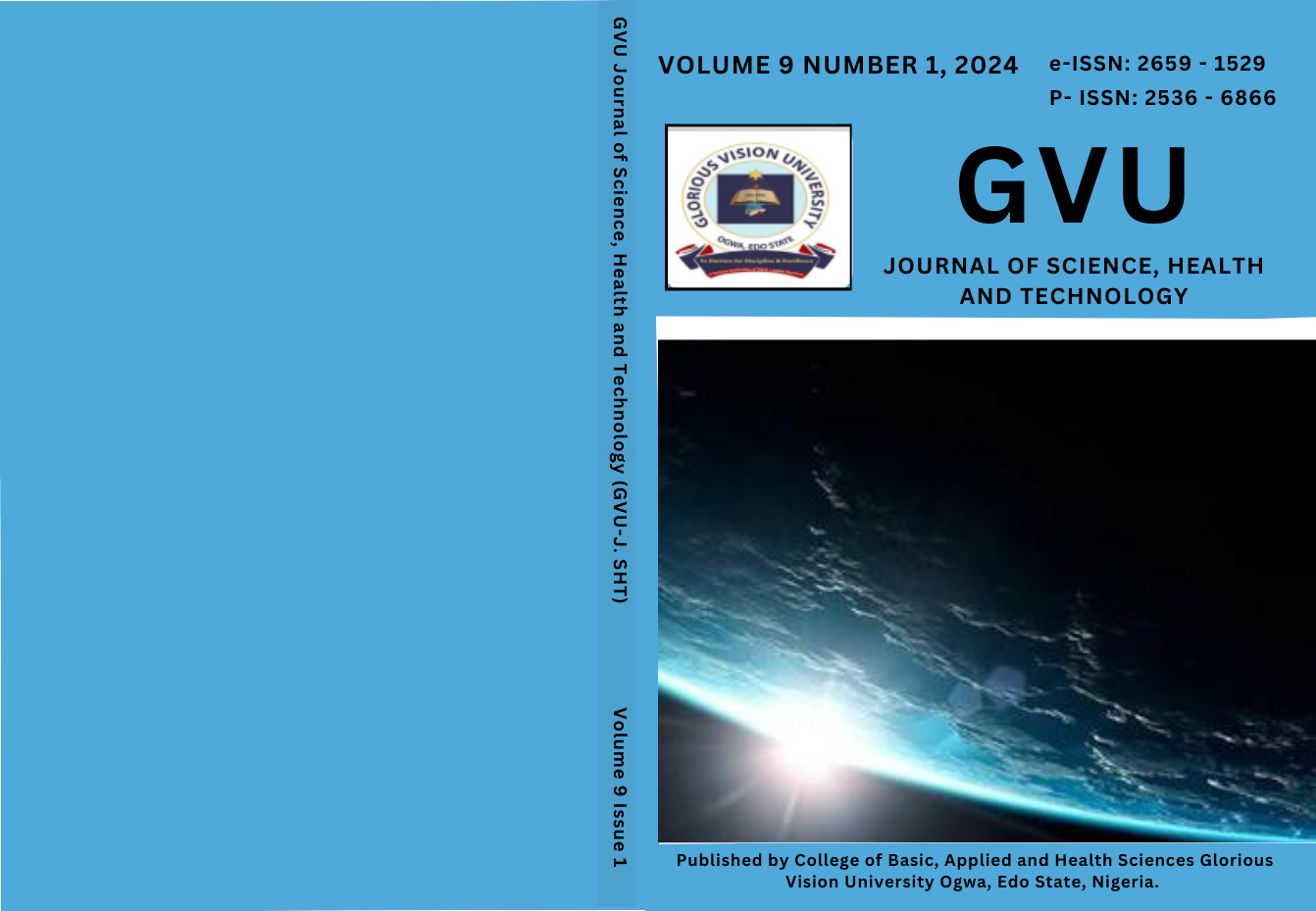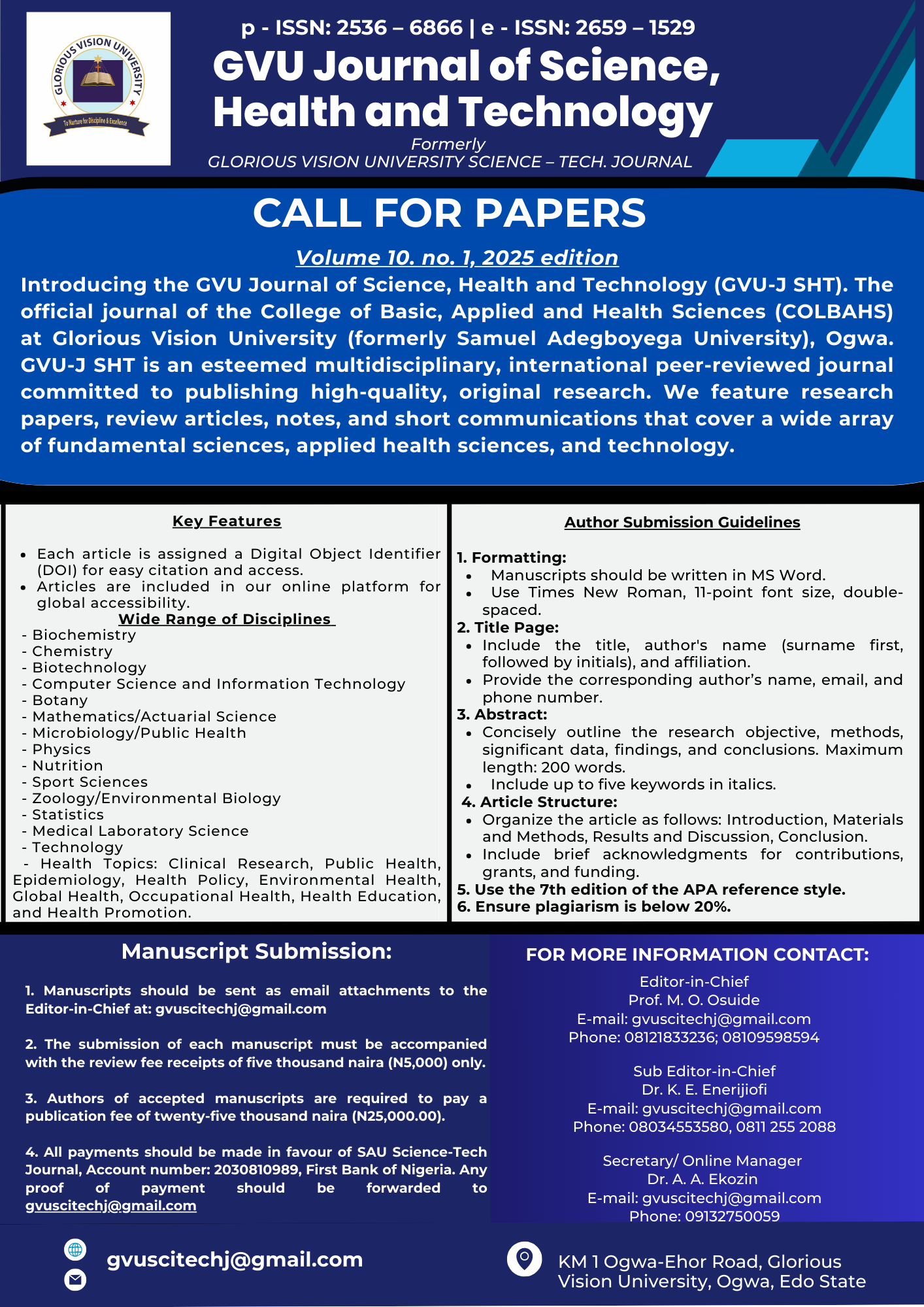Phytochemical screening and antioxidant investigation of Persea americana
DOI:
https://doi.org/10.5281/zenodo.13308126Keywords:
Alkaloids, Antioxidant, inhibitory, macerated, medicinal plant, phytochemicalAbstract
This work investigated the phytochemical and antioxidant properties of aqueous and ethanol extracts of the leaves, stem bark, seeds, and roots of Persea americana. The results of the qualitative phytochemical screening showed the presence of alkaloids, saponins, tannins, phenols, steroids, terpenoids, and flavonoids. Antioxidant activities were assayed using 1,1-Diphenyl-2-Picryl Hydrazyl (DPPH) radical scavenging capacity, reductive potentials, and 2,2-azino-bis(3-ethylbenzothiazoline-6-sulfonic acid) (ABTS) radical scavenging. Results obtained from 15μg/ml of all extracts had the least percentage DPPH radicals, the values of DPPH for the leaves, stem bark, seeds, and root were 14.59±0.21, 6.24±0.04, 3.53±0.12, 9.75±0.17, and 1.66±0.09 respectively. The values of percentage DPPH radical scavenging increased with extract concentration. Just like DPPH radical scavenging, reducing power also increases with the concentration of extract. However, the leaves showed a higher percentage reductive power. The half maximal Inhibitory Concentration (IC50) and the maximal Effective Concentration (EC50) of extracts revealed that percentage values of ABTS were higher than those of DPPH in all samples. The EC50 of the reducing power showed variation in values; however, P. americana seeds sample had the highest value for reducing power (33.12 ± 0.01).




